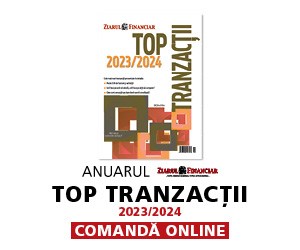The first three mandatory pension schemes (pillar II) have been given the green light from the Private Pensions Commission (CSSPP). What are the similarities and the differences between these new financial products?
All three products are quite similar in terms of their investment policy, risk profile and level of commission. However, despite these similarities, there are also certain details that differentiate the funds. The three products in question are ATZ Viitorul Tau (managed by Allianz-Tiriac Pensii Private), ING Fond de Pensii (managed by ING Fond de Pensii) and Pensia Viva (managed by Aviva Fond de Pensii).
All the three funds will place 70% of their clients' assets into low-risk instruments (government securities and foreign private bonds) and the remaining 30% into higher risk instruments (shares, other bonds, monetary market instruments and mutual funds). This ratio makes the three products medium-risk, according to CSSPP rankings.
The ING fund will invest 67% of its assets into government securities issued by the governments of Romania and other European countries, Allianz-Tiriac will invest 67.5% of its assets in these instruments, whilst Aviva's fund will only place 55% of its assets into the above mentioned instruments. The rest up to 70% will be investments allocated to sovereign securities issued by Japan, USA and Canada and foreign corporate bonds.
The 70%-30% ratio is only valid for the target portfolio, in case nothing out of the ordinary happens, on longer term. In addition, all three pension schemes stipulate a flexible investment strategy, which allows investments in various instruments to fluctuate between certain thresholds.
Although the funds want to allocate 70% of their assets to safer instruments, this share may rise to 85% (in case of Allianz-Tiriac) or even 90% (in case of ING and Aviva) if market conditions worsen.
As far as commissions go, the managers of the funds were allowed even less room to manoeuvre than with investment policies. ING and Allianz-Tiriac are both charging the maximum commissions allowed under law: an initial 2.5% of the contributions deposited and a permanent monthly commission of 0.05% of the fund's assets.
The annual audit commission is also deducted from the fund's money. While Ernst & Young charges ING and Aviva an annual fee of 1,800 RON each, KPMG charges an annual fee of 12,500 to 30,000 euros for auditing Alllianz-Tiriac's fund, depending on the size of the assets.
If a customer is not satisfied with the yield of their fund, they can opt for another fund and pay 5% of the net asset value at the time of the transfer as a fee.
The rest of the commissions (deposit, trading, banking and other commissions) will be paid for by the fund manager as expenses, and will not affect in any way the money managed by the mandatory pension funds.
Aviva has not revealed the level of its commissions yet. This obligation only applies after the fund has been authorised and individuals start to join.
The three funds:
ATZ Viitorul Tau (Allianz-Tiriac Pensii Private), ING Fond de Pensii (ING Fond de Pensii) and Pensia Viva (Aviva Fond de Pensii)
They will invest about 70% of their assets in low-risk instruments and 30% in higher risk instruments, which makes them medium-risk funds
Allianz-Tiriac and ING will charge an initial 2.5% fee of the contributions deposited and 0.05% of the fund assets a month; AVIVA has not revealed level of commissions yet
Pentru alte știri, analize, articole și informații din business în timp real urmărește Ziarul Financiar pe WhatsApp Channels











































